Best Kitesurfing spots in Australia
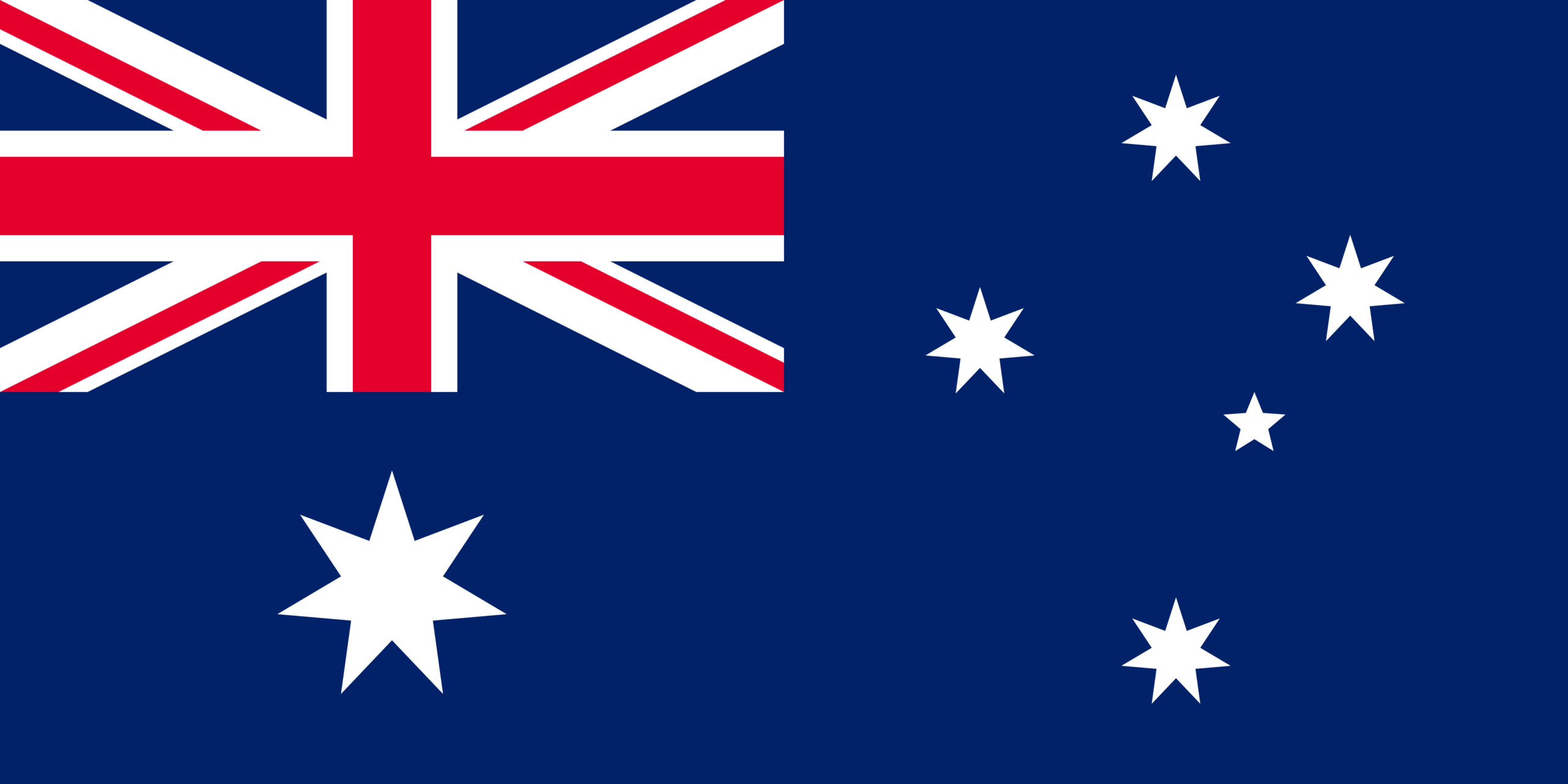
Australia is a kitesurfing paradise, boasting a coastline stretching over 35,000 kilometers and diverse landscapes that cater to all skill levels. From the rugged cliffs of Western Australia to the pristine beaches of Queensland, Australia offers an unparalleled kitesurfing experience.
The country is blessed with consistent winds year-round, particularly along the southern and western coasts, making it an ideal destination for enthusiasts seeking adrenaline-pumping rides or serene cruising sessions.
Furthermore, the country’s vibrant kitesurfing community and laid-back beach culture add to the allure, providing a welcoming atmosphere for travelers from around the world.
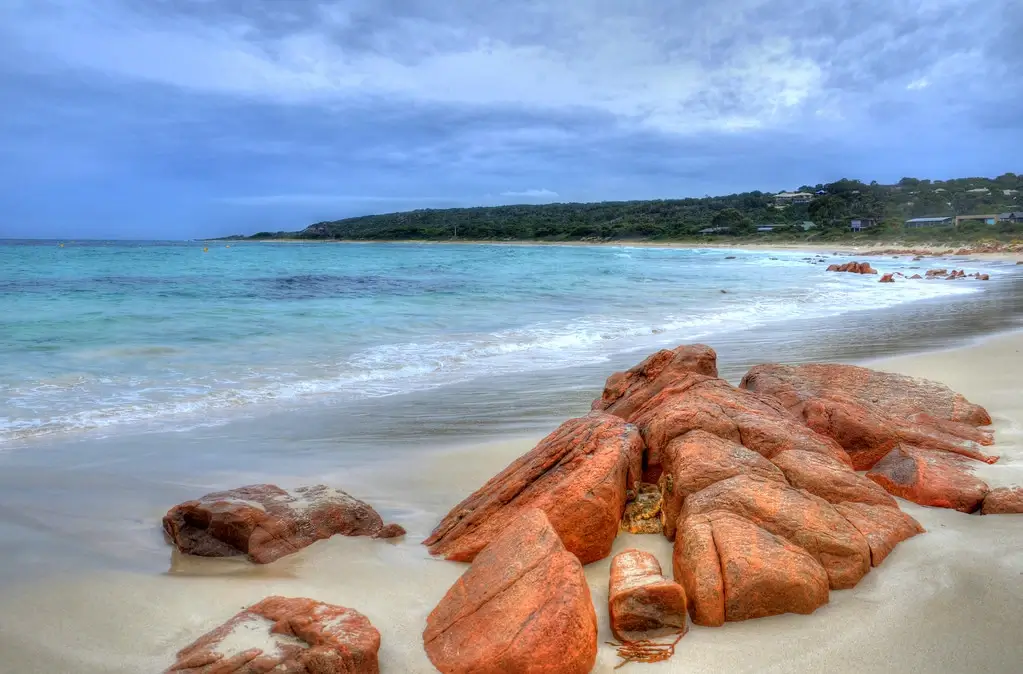
Margaret River, Western Australia
Margaret River, located in Western Australia, is renowned among kitesurfers for its exceptional conditions and stunning natural beauty. Blessed with consistent winds, particularly from the southwest, riders can enjoy thrilling sessions year-round.
The expansive shoreline boasts pristine beaches, offering ample space for kitesurfing enthusiasts to launch and ride the waves. However, kitesurfers should be aware of potential hazards, including reef breaks and strong currents, especially during certain tidal conditions. These elements add an exciting challenge for experienced riders but require caution and familiarity with the area.
Despite the hazards, Margaret River rewards adventurers with unforgettable kitesurfing experiences amidst breathtaking coastal landscapes. With its perfect blend of wind, waves, and scenery, it’s no wonder that Margaret River remains a top destination for kitesurfing enthusiasts from around the globe.
Wind conditions
In Margaret River, kitesurfers can expect favorable wind conditions year-round. Prevailing southwesterly winds dominate the area, providing consistent speeds ideal for kitesurfing.
During the summer months, wind speeds typically range from 15 to 25 knots, offering excellent conditions for riding the waves.
In the winter season, wind speeds may vary slightly, ranging from 10 to 20 knots, but still providing ample opportunities for kitesurfing adventures.
Water conditions
In Margaret River, kitesurfers encounter varied water conditions, providing diverse experiences for enthusiasts. The water temperature generally ranges from 18 to 22 degrees Celsius, offering comfortable conditions for most of the year. Tides in the area can influence the depth and shape of the shoreline, creating dynamic kitesurfing environments.
The coastline features a mix of wave breaks and flatwater areas, catering to different riding preferences. Kitesurfers can enjoy challenging wave riding sessions along certain stretches, while other areas offer smoother conditions for freestyle maneuvers and cruising.
While Margaret River is renowned for its world-class surf breaks, kitesurfers should be aware of potential hazards such as submerged rocks and reefs, particularly in areas with shallow depths. Additionally, strong currents and marine life, including sharks, can pose risks, requiring riders to exercise caution and adhere to safety guidelines while enjoying the waves.
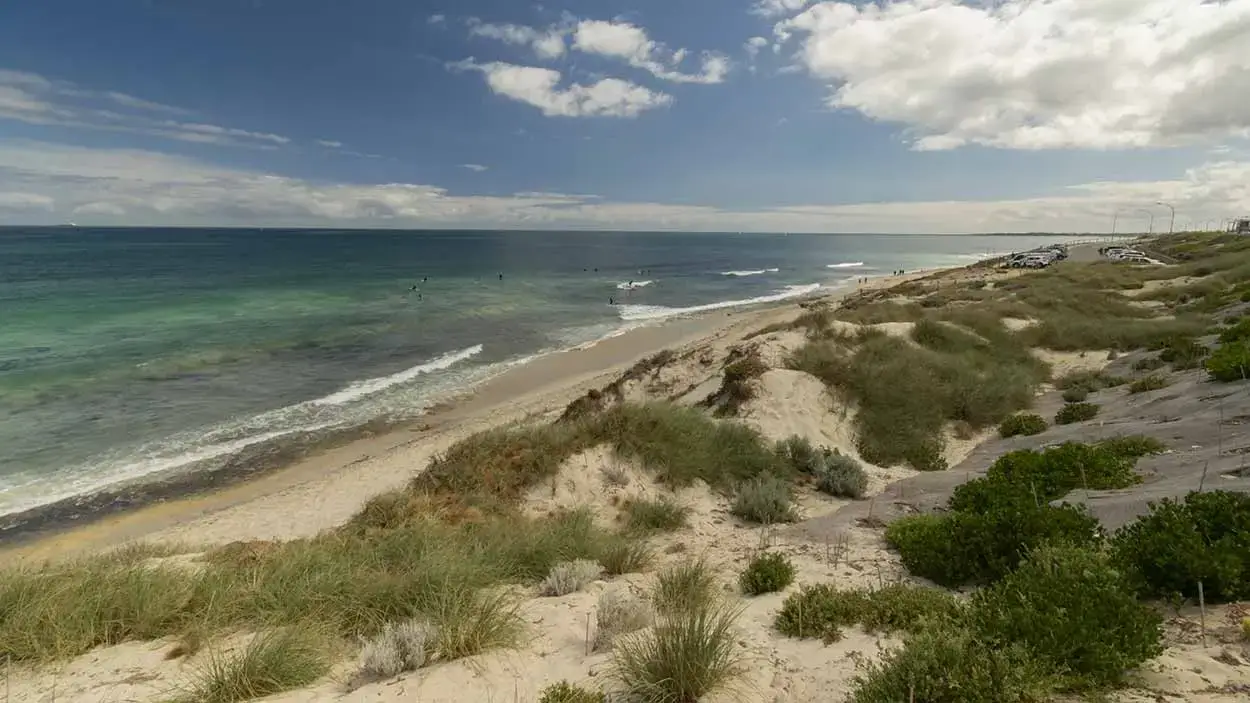
Perth, Western Australia
Perth, nestled on the western coast of Australia, is a kitesurfing haven renowned for its consistent winds and stunning coastline. With its Mediterranean climate, the city enjoys reliable sea breezes, particularly during the summer months, making it an ideal destination for kitesurfers year-round.
The shoreline features expansive sandy beaches and clear waters, providing ample space for riders to launch and enjoy exhilarating sessions. However, kitesurfers should be mindful of potential hazards, including reef breaks and strong currents, especially in certain areas along the coast.
The presence of marine life such as sharks adds to the need for caution and awareness while kitesurfing. Despite these challenges, Perth offers kitesurfing enthusiasts a perfect blend of wind, waves, and natural beauty, ensuring unforgettable experiences on the water for riders of all levels.
Wind conditions
In Perth, kitesurfers benefit from consistent wind conditions suitable for their sport throughout the year. The prevailing winds, primarily southerlies and seabreezes, provide ideal conditions for kitesurfing enthusiasts.
During the summer months, wind speeds typically range from 15 to 25 knots, offering excellent opportunities for kitesurfing adventures.
In the winter season, wind speeds may vary slightly, averaging around 10 to 20 knots.
Water conditions
In Perth, kitesurfers encounter diverse water conditions suitable for their sport. The water temperature typically ranges from 20 to 24 degrees Celsius, providing comfortable conditions for most of the year.
Tides play a significant role in shaping the coastline, influencing the depth and shape of the shoreline. Kitesurfers should be mindful of tidal fluctuations, which can affect water depth and current strength.
Perth offers a variety of kitesurfing spots, ranging from wave breaks to flatwater areas. Some locations provide ideal conditions for wave riding, while others offer smooth, flatwater surfaces for freestyle tricks and cruising.
While Perth’s coastline generally lacks significant reefs, kitesurfers should remain vigilant for submerged obstacles such as rocks and sandbanks, particularly in shallower areas. Additionally, strong currents and marine life, including sharks and jellyfish, are potential hazards that riders should be aware of and take precautions against while enjoying their kitesurfing sessions.
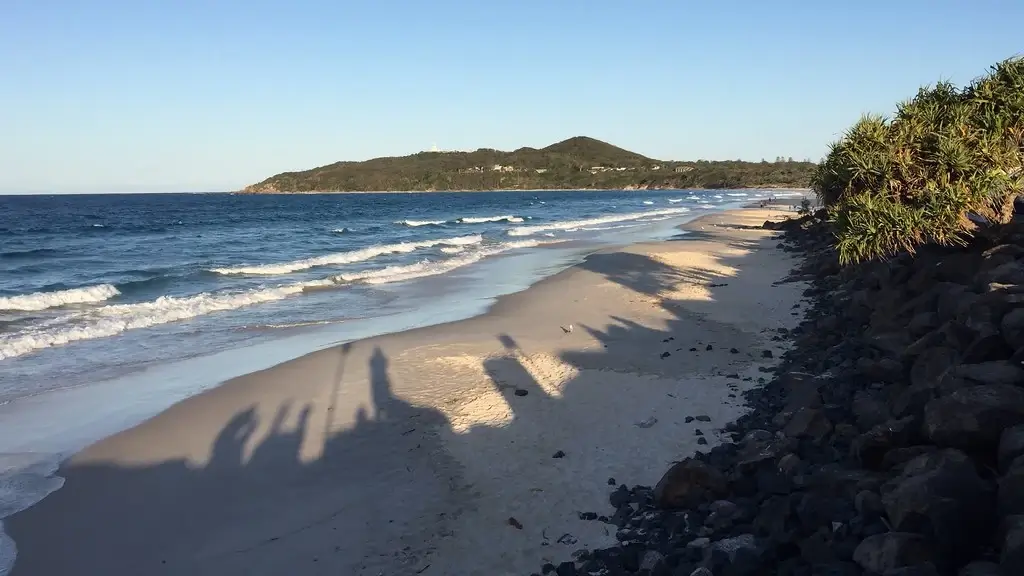
Byron Bay, New South Wales
Byron Bay is a renowned kitesurfing destination blessed with consistent winds and stunning coastal scenery. The town enjoys a subtropical climate, with warm temperatures and prevailing southeast trade winds, creating ideal conditions for kitesurfing enthusiasts throughout the year.
The shoreline features expansive sandy beaches and crystal-clear waters, providing ample space for riders to launch and ride the waves. However, kitesurfers should be mindful of potential hazards, including rip currents and submerged rocks, particularly around rocky outcrops and headlands.
Additionally, the presence of marine life such as dolphins and whales adds to the allure of kitesurfing in this picturesque location. Despite the challenges, Byron Bay offers kitesurfers an unforgettable experience amidst breathtaking natural beauty and world-class kitesurfing conditions.
Wind conditions
In Byron Bay, kitesurfers enjoy favorable wind conditions suitable for their sport year-round. The prevailing winds, predominantly southeasterlies, provide consistent speeds ideal for kitesurfing.
During the summer months, wind speeds typically range from 10 to 20 knots, offering excellent opportunities for kitesurfing adventures.
In the winter season, wind speeds may vary slightly, averaging around 10 to 15 knots.
Water conditions
In Byron Bay, kitesurfers experience a range of water conditions suitable for their sport. The water temperature typically ranges from 20 to 24 degrees Celsius, providing comfortable conditions for most of the year.
Tides play a significant role in shaping the coastline, influencing the depth and shape of the shoreline. Kitesurfers should be mindful of tidal changes, which can affect water depth and current strength.
Byron Bay offers a mix of wave breaks and flatwater areas, catering to different riding preferences. Some locations provide excellent wave riding opportunities, while others offer smooth, flatwater surfaces for freestyle tricks and cruising.
While Byron Bay generally lacks significant reefs, kitesurfers should remain cautious of submerged obstacles such as rocks and sandbanks, particularly in shallower areas. Additionally, strong currents and marine life, including sharks and jellyfish, are potential hazards.
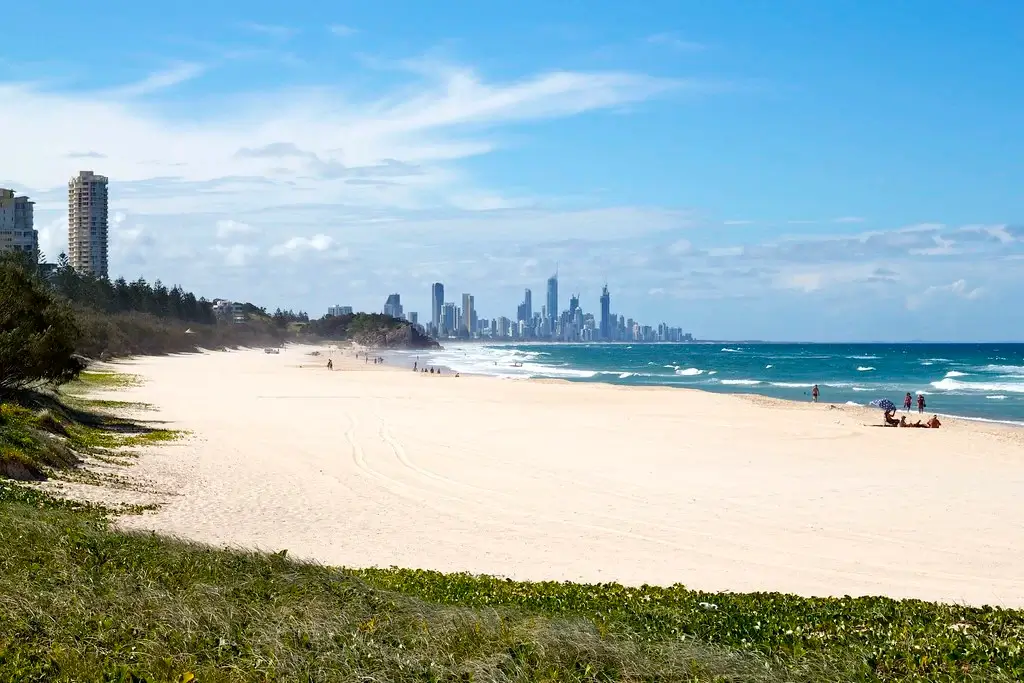
Gold Coast, Queensland
Gold Coast, located in Queensland, Australia, is a premier kitesurfing destination known for its stunning beaches and excellent wind conditions. With its subtropical climate, the Gold Coast enjoys warm weather year-round, making it an ideal spot for kitesurfing enthusiasts.
The coastline features expansive sandy beaches and clear waters, providing ample space for riders to launch and ride the waves. Additionally, the region benefits from consistent southeast trade winds during the summer months, creating perfect conditions for kitesurfing adventures.
However, kitesurfers should be aware of potential hazards, including strong currents, submerged rocks, and crowded beaches, particularly in popular tourist areas. Despite these challenges, the Gold Coast offers kitesurfers a wonderful experience and world-class kitesurfing conditions that are sure to thrill riders of all levels.
Wind conditions
In Gold Coast, kitesurfers can expect favorable wind conditions for their sport year-round. The prevailing winds, primarily southeasterlies and seabreezes, provide consistent speeds ideal for kitesurfing.
During the summer months, wind speeds typically range from 10 to 20 knots, offering excellent opportunities for kitesurfing adventures.
In the winter season, wind speeds may vary slightly, averaging around 10 to 15 knots.
Water conditions
The Gold Coast offers fantastic conditions for kitesurfing, attracting beginners and experienced riders alike. Here’s a breakdown of what to expect:
- Water temperature: Enjoyable year-round! Gold Coast boasts warm waters averaging between 20-28°C (68-82°F), making kitesurfing comfortable throughout the year.
- Tides: The Gold Coast experiences tides ranging from 1-2 meters. Be mindful of the tide charts, especially at locations like Shearwater Esplanade, which can get shallow at low tide.
- Waves or flat water: The Gold Coast provides choices depending on your preference. The Broadwater is renowned for its flat water, ideal for learners and freeriders. Areas like South Stradbroke Island and The Spit offer some chop and waves for more experienced riders.
- Reefs and hazards: While the Gold Coast has stunning beaches, be aware of potential hazards. Coral reefs and rocks exist offshore in some areas. It’s crucial to understand the specific location before heading out and staying clear of these obstacles.
Here are some additional points to consider for kitesurfing on the Gold Coast:
- Wind: The prime kitesurfing season is between July and September when winds are consistent.
- Lessons: Beginners should strongly consider taking lessons from a qualified instructor for safety and skill development.
- Safety gear: Always wear a helmet, life vest, and sunscreen.
- Weather awareness: Check the weather forecast before hitting the water.
- Communication: Let someone know where you’re going and when you expect to be back.
With its beautiful beaches, warm water, and variety of flat and wave locations, the Gold Coast is a haven for kitesurfing. By following safety precautions and understanding the conditions, you can have an amazing kitesurfing experience!

Cairns, Queensland
Cairns, situated in tropical North Queensland, offers kitesurfing enthusiasts a unique and exhilarating experience amidst stunning natural beauty. With its tropical climate, Cairns enjoys warm temperatures and abundant sunshine year-round, creating ideal conditions for outdoor activities like kitesurfing.
The shoreline boasts picturesque beaches and clear turquoise waters, providing ample space for riders to launch and enjoy thrilling sessions. However, kitesurfers should be mindful of potential hazards, including strong currents, shallow reefs, and marine stingers, particularly during the summer months.
Furthermore, Cairns is known for its proximity to the Great Barrier Reef, presenting both opportunities and challenges for kitesurfers navigating the area’s diverse marine ecosystem. Despite these challenges, Cairns offers kitesurfers an unforgettable experience.
Wind conditions
In Cairns, Queensland, kitesurfers experience varied wind conditions throughout the year due to its tropical climate.
During the summer months, prevailing southeast trade winds dominate, with wind speeds typically ranging from 10 to 20 knots. These winds provide favorable conditions for kitesurfing adventures, especially in the mornings and evenings when they tend to be stronger.
In the winter season, wind speeds may decrease slightly, averaging around 5 to 15 knots. However, kitesurfers can still enjoy sessions during this time, particularly in sheltered areas or during periods of thermal activity.
Water conditions
In Cairns, kitesurfers encounter diverse water conditions suitable for their sport. The water temperature typically ranges from 23 to 29 degrees Celsius, providing warm and comfortable conditions year-round.
Tides play a significant role in shaping the coastline, influencing the depth and shape of the shoreline. Kitesurfers should be aware of tidal changes, which can affect water depth and current strength.
Cairns offers a mix of wave breaks and flatwater areas, providing opportunities for different riding styles. Some locations boast excellent wave riding conditions, while others offer smooth, flatwater surfaces ideal for freestyle tricks and cruising.
While Cairns generally lacks significant reefs directly off its coastline, kitesurfers should remain cautious of potential hazards such as submerged rocks, sandbars, and marine life. Strong currents and tidal flows may also impact kiteboarding conditions, requiring riders to exercise caution and familiarity with the local environment.
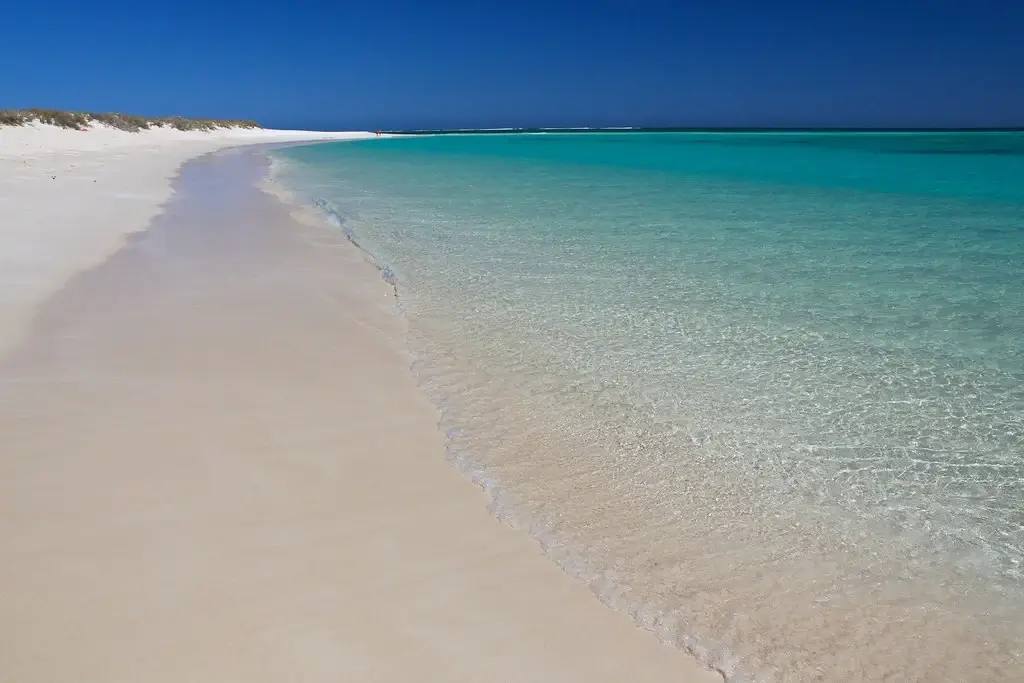
Exmouth, Western Australia
Exmouth, located in Western Australia, is a kitesurfing paradise renowned for its pristine beaches, crystal-clear waters, and consistent winds. With its arid climate, Exmouth enjoys warm temperatures and minimal rainfall, creating perfect conditions for outdoor activities year-round.
The shoreline features expansive sandy beaches and shallow waters, providing ample space for kitesurfers to launch and ride the waves. Additionally, Exmouth benefits from reliable sea breezes, particularly during the summer months, making it an ideal spot for kitesurfing enthusiasts of all levels.
However, kitesurfers should be mindful of potential hazards, including submerged rocks, strong currents, and marine life such as sharks and jellyfish, particularly in certain areas along the coast. Despite these challenges, Exmouth offers kitesurfers a fantastic experience and world-class kitesurfing conditions that are sure to delight riders seeking adventure on the water.
Wind conditions
In Exmouth, Western Australia, kitesurfers benefit from consistent wind conditions suitable for their sport throughout the year. The prevailing winds, primarily southeasterlies and seabreezes, provide ideal conditions for kitesurfing.
During the summer months, wind speeds typically range from 15 to 25 knots, offering excellent opportunities for kitesurfing adventures.
In the winter season, wind speeds may vary slightly, averaging around 10 to 20 knots.
These reliable winds make Exmouth a popular destination for kitesurfers of all skill levels, ensuring thrilling rides and enjoyable sessions year-round.
Water conditions
Exmouth is known as a kitesurfing paradise for a reason! Here’s a breakdown of the water conditions you can expect:
- Water temperature: Warm! The average water temperature in Exmouth ranges from 21°C (70°F) in winter to 30°C (86°F) in summer, making it comfortable to kitesurf all year round.
- Tides: Tides can vary depending on the time of year, but they generally range from 1-2 meters. Be sure to check the tide charts before you head out, as some spots can get shallow at low tide.
- Waves: Exmouth offers a variety of spots depending on your experience level. Sandy Bay, the most popular location, boasts flat water with a sandy bottom, perfect for beginners and freeriders. Town Beach can get choppy at times, but it’s another flat water location. More experienced riders can head to places like Yardie Homestead and Graveyards for bump-and-jump conditions and waves.
- Reefs and hazards: Be aware that some spots in Exmouth have coral reefs and rocks offshore. It’s important to be familiar with the area before you head out and to stay clear of these hazards. Additionally, since Exmouth is a marine park, there are strict regulations on where you can kitesurf. Be sure to check with the Department of Parks and Wildlife for the latest information.
Here are some additional tips for kitesurfing in Exmouth:
- The best time to kitesurf in Exmouth is between mid-August and March, when the wind is consistent.
- If you’re a beginner, it’s important to take lessons from a qualified instructor.
- Always wear a helmet, life vest, and sunscreen.
- Be aware of the weather conditions before you head out.
- Let someone know where you’re going and when you expect to be back.
All things considered, Exmouth is a great place to kitesurf for all levels.
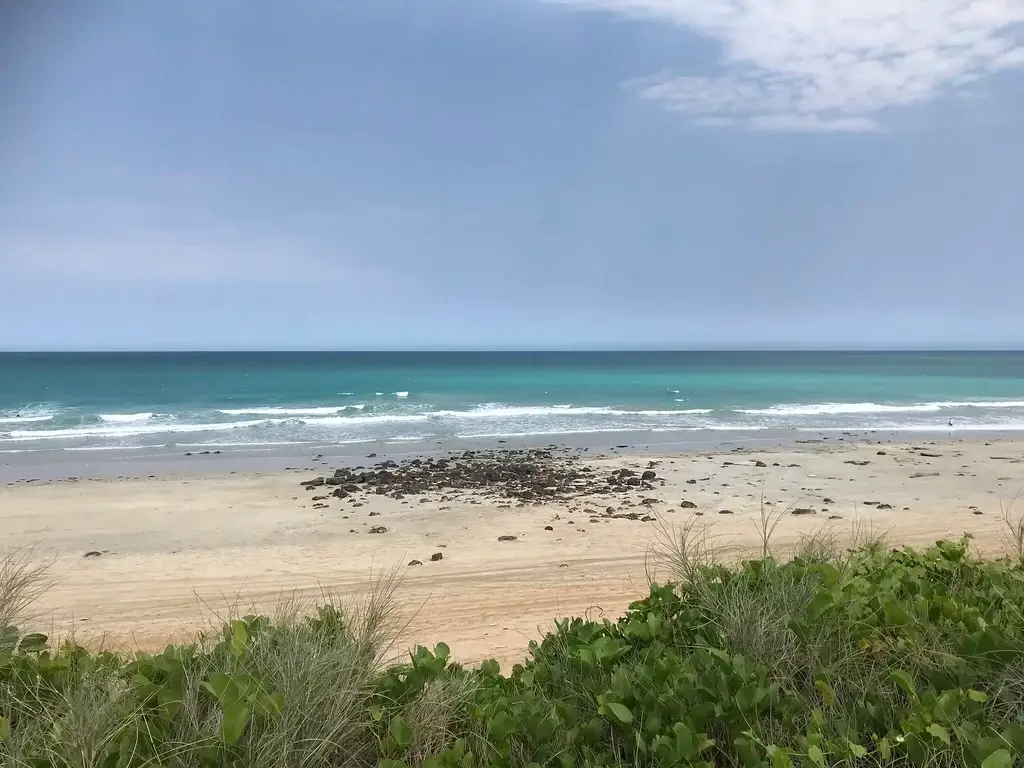
Broome, Western Australia
Broome, nestled on the western coast of Australia in Western Australia, is a hidden gem for kitesurfing enthusiasts seeking adventure in a stunning coastal setting. With its tropical climate, Broome enjoys warm temperatures and clear skies year-round, providing perfect conditions for outdoor activities like kitesurfing.
The shoreline boasts expansive sandy beaches and turquoise waters, offering ample space for riders to launch and ride the waves. Additionally, Broome benefits from reliable sea breezes, particularly during the dry season from April to October, making it an ideal spot for kitesurfing enthusiasts of all levels.
However, kitesurfers should be cautious of potential hazards, including strong currents, shallow reefs, and marine life such as jellyfish and crocodiles, particularly in certain areas along the coast. Despite these challenges, Broome offers kitesurfers a unique and unforgettable experience.
Wind conditions
In Broome, Western Australia, kitesurfers can expect favorable wind conditions suitable for their sport throughout the year. The prevailing winds, primarily southeasterlies and seabreezes, provide consistent speeds ideal for kitesurfing.
During the summer months, wind speeds typically range from 10 to 20 knots, offering excellent opportunities for kitesurfing adventures.
In the winter season, wind speeds may vary slightly, averaging around 5 to 15 knots.
Water conditions
Broome in Western Australia is another fantastic spot for kitesurfing, offering a combination of warm weather, favorable winds, and diverse conditions. Here’s a rundown of what to expect:
- Water temperature: Broome boasts tropical bliss with average water temperatures ranging from 23°C (73°F) in winter to a sizzling 30°C (86°F) in summer, perfect for kitesurfing all year round.
- Tides: Tides in Broome can vary significantly, with a range of up to 8 meters due to its location in Kimberley. Be sure to consult tide charts meticulously, especially before heading out to Cable Beach, which experiences significant tidal flats at low tide.
- Waves or flat water: Broome caters to all kitesurfing preferences. Cable Beach is known for its incredible flat water at high tide, ideal for beginners and freeriders. When the tide goes out, Cable Beach reveals vast sand flats that are perfect for practicing your landboarding skills. More experienced riders can find waves and chop at spots like Town Beach and Gantheaume Point.
- Reefs and hazards: While Broome’s beaches are stunning, be aware of potential hazards. Coral reefs and rocks are present offshore in some areas. It’s crucial to understand the specific location before you head out and stay clear of these obstacles. Additionally, due to Broome’s remote location, it’s advisable to be extra cautious and let someone know your kitesurfing plans.
Here are some additional tips for kitesurfing in Broome:
- Wind: The best time for consistent winds is during the dry season, from May to September.
- Lessons: Beginners should strongly consider taking lessons from a qualified instructor to ensure safety and proper technique.
- Safety gear: Always wear a helmet, life vest, and sunscreen.
- Weather awareness: Check the weather forecast before heading out, being particularly mindful of tides.
- Communication: Due to Broome’s remoteness, let someone know where you’re going kitesurfing and when you expect to be back.
Everything considered, Broome offers a fantastic kitesurfing experience.
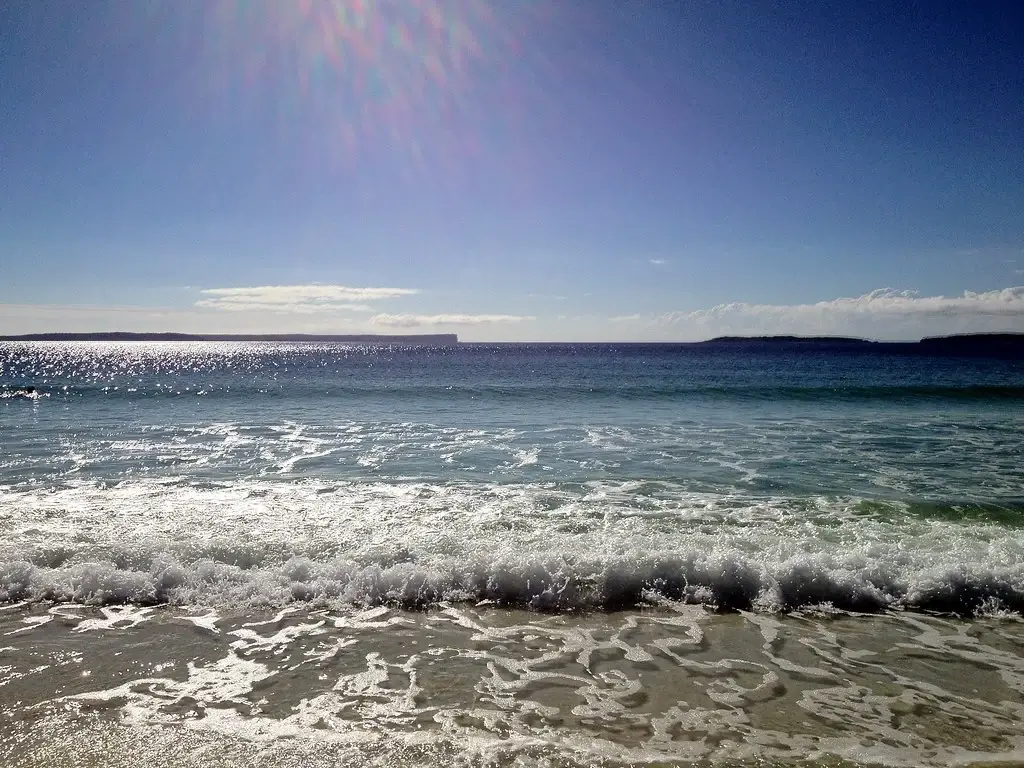
Jervis Bay, New South Wales
Jervis Bay, nestled along the south coast of New South Wales, Australia, is a picturesque destination offering kitesurfing enthusiasts a perfect blend of natural beauty and thrilling adventures on the water. With its temperate climate, Jervis Bay enjoys mild temperatures and sunny days throughout the year, creating ideal conditions for outdoor activities like kitesurfing.
The shoreline features pristine sandy beaches and crystal-clear waters, providing ample space for riders to launch and ride the waves. Jervis Bay benefits from consistent winds, particularly during the summer months, making it an excellent spot for kitesurfing enthusiasts of all levels.
However, kitesurfers should be mindful of potential hazards, including strong currents, submerged rocks, and marine life such as sharks and stingrays, particularly in certain areas along the coast. Despite these challenges, Jervis Bay offers kitesurfers an unforgettable experience amidst breathtaking coastal scenery.
Wind conditions
In Jervis Bay, New South Wales, kitesurfers experience favorable wind conditions throughout the year. The prevailing winds, typically southerlies and seabreezes, provide consistent speeds ideal for kitesurfing.
During the summer months, wind speeds range from 10 to 20 knots, offering excellent opportunities for kitesurfing adventures.
In the winter season, wind speeds may vary slightly, averaging around 5 to 15 knots.
Water conditions
In Jervis Bay, kitesurfers enjoy a range of water conditions suitable for their sport. The water temperature typically ranges from 18 to 22 degrees Celsius, providing comfortable conditions for most of the year.
Tides play a significant role in shaping the coastline, influencing the depth and shape of the shoreline. Kitesurfers should be mindful of tidal changes, which can affect water depth and current strength.
Jervis Bay offers a mix of wave breaks and flatwater areas, providing opportunities for different riding styles. Some locations boast excellent wave riding conditions, while others offer smooth, flatwater surfaces ideal for freestyle tricks and cruising.
While Jervis Bay is known for its pristine waters and sandy beaches, kitesurfers should remain cautious of potential hazards such as submerged rocks, sandbars, and marine life. Strong currents and tidal flows may also impact kiteboarding conditions, requiring riders to exercise caution and familiarity with the local environment.
hey there and thank you for your info – I
have definitely picked up anything new from right
here. I did however expertise some technical points using this web
site, since I experienced to reload the website a lot of times
previous to I could get it to load properly. I had been wondering
if your web hosting is OK? Not that I am complaining, but sluggish loading instances times will very
frequently affect your placement in google and could damage your high quality score if advertising
and marketing with Adwords. Well I am adding this RSS to my e-mail and could look
out for a lot more of your respective interesting content.
Ensure that you update this again soon.. Lista escape roomów
Hi,
Thanks for your reply. There were some issues with slugginess of my website. For some reason Cloudflare DNS was disconnected. It’s resolved now.
Regards,
Evert